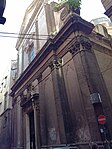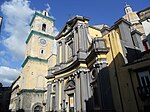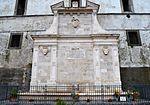Historic Centre of Naples

Considering that the site is of exceptional value. It is one of the most ancient cities in Europe, whose contemporary urban fabric preserves the elements of its long and eventful history. Its setting on the Bay of Naples gives it an outstanding universal value which has had a profound influence in many parts of Europe and beyond. — Motivation of UNESCO The historic center of Naples represents the first historical nucleus of the city. It contains 27 centuries of history. Mostly declared a World Heritage Site by UNESCO in 1995 (about 1021 hectares), it was included in the list of assets to be protected; its particular uniqueness lies in the almost total conservation and use of the ancient Greek road layout.
Excerpt from the Wikipedia article Historic Centre of Naples (License: CC BY-SA 3.0, Authors, Images).Historic Centre of Naples
Vico Santa Maria Antesaecula, Naples San Lorenzo
Geographical coordinates (GPS) Address Nearby Places Show on map
Geographical coordinates (GPS)
| Latitude | Longitude |
|---|---|
| N 40.85139 ° | E 14.26278 ° |
Address
Vico Santa Maria Antesaecula
Vico Santa Maria Antesaecula
80139 Naples, San Lorenzo
Campania, Italy
Open on Google Maps










